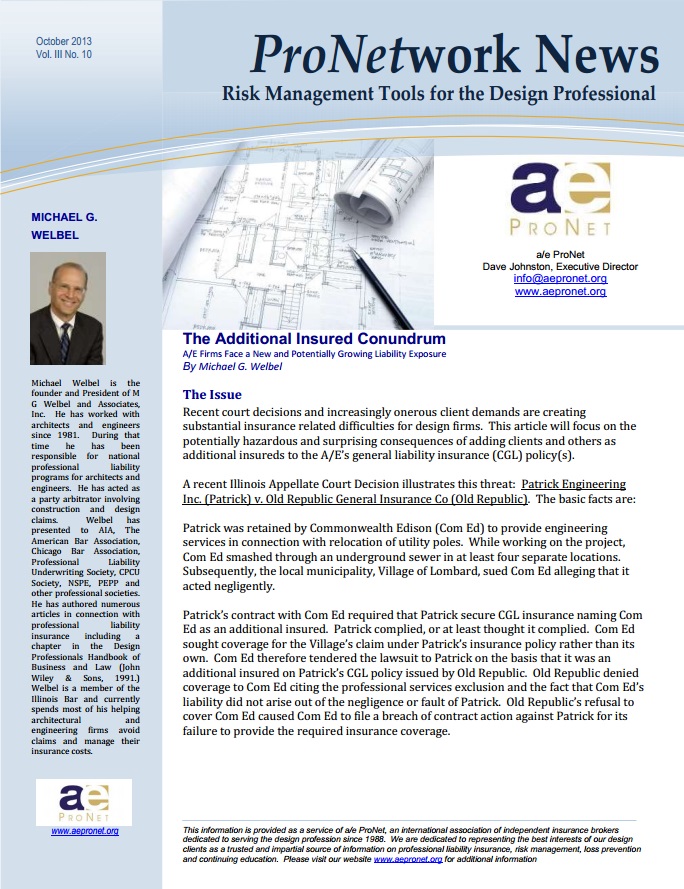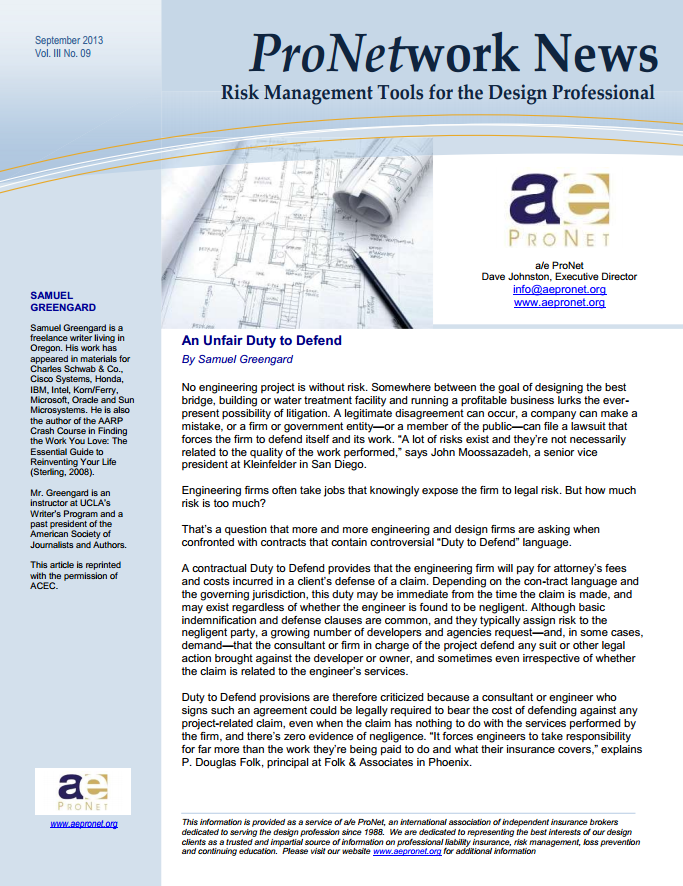 When it comes to insuring architects, engineers, and design consultants, one thing the top-tier Professional Liability insurance providers have in common is a wealth of risk management resources for their clients. Some of these resources are even made available to the public. For example, in the past, we’ve blogged War Stories: Real-life Claims Scenarios from Victor O. Schinnerer and Beazley Pro, a new publication from Beazley.
When it comes to insuring architects, engineers, and design consultants, one thing the top-tier Professional Liability insurance providers have in common is a wealth of risk management resources for their clients. Some of these resources are even made available to the public. For example, in the past, we’ve blogged War Stories: Real-life Claims Scenarios from Victor O. Schinnerer and Beazley Pro, a new publication from Beazley.
But if, in the course of the day, you come up against an insurance term you wish you understood better, the Travelers Contract Solutions Matrix is a good place to look for your answer.
Organized glossary style, this index begins with A Well-Written Contract and ends with Waiver of Subrogation. It’s a place to find definitions, explanations, examples, and answers to frequently asked questions, each presented in the form of a concise two-page document. Other relevant topics included are Additional Insureds, Duty to Defend, Requests for Information, and Unauthorized Changes.
The following is an excerpt from the Travelers Contract Solutions Matrix document on Insurance Requirements:
III. Negotiating points
Policy Limits. You may be asked to provide higher limits than you maintain under your current professional liability or other insurance policy. You may be able to recoup that additional cost of higher limits from the other party to the contract through higher fees. In some cases, specific job excess or specific client excess coverage is available to increase limits on a single project or for a single client.
Length of Obligation. Since professional liability coverage is written on a claims-made basis, you may be asked to maintain the coverage for years following completion of the project. You should negotiate a reasonable period of time in light of the economics of the project and the applicable statute of limitations/statute of repose.
Insurability. Typically, professional liability policies do not cover express warranties and guarantees or liability assumed by contract (liability beyond what a design professional would normally have under the law). Therefore, it is important to evaluate each provision in a proposed contract to verify that you are not guaranteeing your work or being held to a standard of care that is greater than what is imposed by law. In particular, any indemnity clause should be carefully reviewed for this issue.
Download the full PDF version of this resource to find information on Professional Liability, Commercial General Liability (CGL), Workers’ Compensation and Employers’ Liability, and Commercial Auto Liability.
We hope this perk from Travelers is helpful to you. Of course, if you have insurance questions, you can always contact your local a/e ProNet broker and get a quick, straight, specialized answer.









